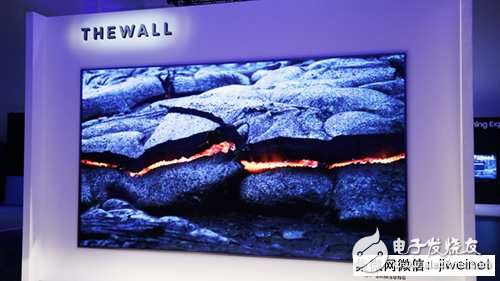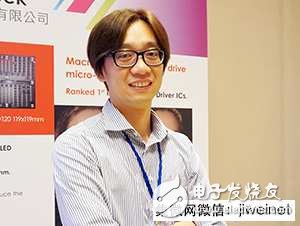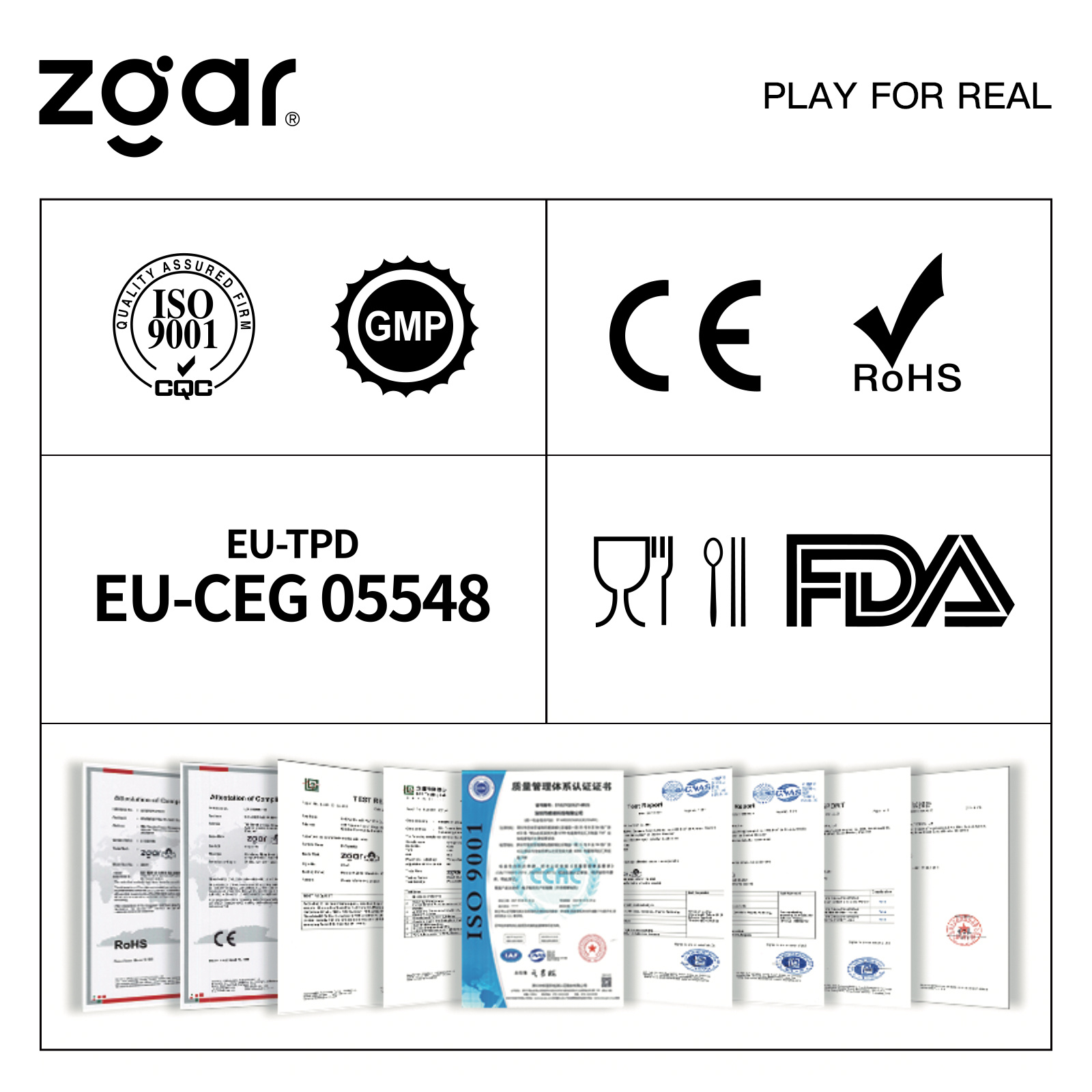At the Consumer Electronics Show (CES) exhibition in 2018, the physical display of MicroLED TV displays has emerged, posing a threat to the current popular OLED displays. However, if MicroLED is to be officially mass-produced, there are still many technical difficulties that must be broken. Until then, MiniLED displays with smaller die sizes will be the first to be marketed, and the display technology will also be used in LCD backlights to add performance to LCD screens.
In recent years, due to the high color contrast and color rendering of organic light-emitting diodes (OLEDs), it has become the primary competitor of liquid crystal displays (LCDs). MicroLED display technology, which has come to the forefront, also has the advantage of self-illuminating display, and is expected to become the mainstream display technology of the next generation. Although the key technologies such as Mass Transfer and Bad Spot Repair are still not in production, the CES in 2018 has already seen the display of MicroLED display entities from major international manufacturers.
Before the actual mass production of MicroLED displays, manufacturers have actively applied the technology to LCD backlights, and the active (AcTIve Matrix, AM) architecture brings high contrast and high color rendering performance close to OLEDs for LCD panels. This application is the production capacity of the relevant suppliers before the mass production of MicroLED displays.
Korean factory invests heavily in MicroLED displayIn CES in 2018, Samsung Electronics demonstrated the 146-inch spliced ​​MicroLED TV "The Wall" featuring self-emission (Self-EmitTIng), which became a highlight of the show (Figure 1).

Figure 1 In the 2018 CES, Samsung Electronics demonstrated the 146-inch spliced ​​MicroLED TV "The Wall", which became a highlight of the show. Image source: Samsung
Jonghee Han, president of Samsung's Electronic Vision Display Division, said that The Wall is the world's first spliced ​​MicroLED TV, which enables MicroLED display technology to be converted to any size and provides excellent brightness and color gamut performance.
The borderless splicing design allows The Wall to let consumers decide on TV size when they enter the consumer market in the future. It can also meet a variety of different application environments, and splicing the display size that best meets the needs for different display spaces.
On the other hand, Samsung's LED backlight module supplier Lumens also exhibited a 0.57-inch Head Up Display (HUD) and a large 100-inch billboard (Signage) at the CES show in 2018. It is reported that the head-up display uses 8 micron (μm) sized crystals, and the large billboard is composed of 300 μm & TImes; 100 μm crystal grains.
In fact, according to current industry standards, the grain size must be below 100 microns to be called a MicroLED display. However, due to the technical challenges of re-breaking the number of transfers and yields, manufacturers will relax the grain size requirements to 150 microns, and let the MiniLED display come out first. Despite this, the large billboards Lumens showed can only produce 20 to 30 pieces per month.
MiniLED backlight improves contrastSince Sony exhibited a large-size MicroLED display screen in 2016, the Korean company's investment in MicroLED display technology can be seen at CES in 2018. Despite the promising prospects for Micro-LED, it will take some time for capacity and price to meet the stringent requirements of the consumer electronics market. Before the MicroLED/MiniLED display technology really entered the consumer market, the photoelectric technology was used for the backlight application of the LCD, and became one of the excessive products before the MicroLED display came true.
Despite the fascination of the OLED display's self-illumination and high-contrast characteristics, due to its short life, screen imprinting, heat and humidity resistance, and its productivity problems, LCD monitors with mature technology and low price will remain in the market for a short period of time. Bulk.
Huang Bingkai, manager of the accumulation technology micro-light-emitting diode business unit, shared (Figure 2). At present, the LCD backlight technology uses a light-measuring LED as a bulk, and a light guide plate is used to make the line light source a surface light source. After the MiniLED is introduced into the LCD backlight, the direct-lit backlight technology enables the local control (Local Dimming) range and particles to be smaller than before, and the dimming area is more precise and precise, which can further enhance the high dynamic range imaging of the LCD screen (High Dynamic) Range, HDR) performance.

Figure 2 Huang Bingkai, manager of Accumulation Technology's micro-light-emitting diode business unit, shared that after the MiniLED was introduced into the LCD backlight, the direct-lit backlight technology made the local control (Local Dimming) range and particles smaller than ever.
Passive architecture adds performanceAt present, many manufacturers in the industry have indicated that they are developing MiniLED backlight technology. At the CES show in 2018, Innolux demonstrated the world's first AM MiniLED-backlit automotive panel.
In this regard, Ding Jinglong, head of the Group's Executive Vice President and Technology Development Center, said that the most technical feature of the product is its active architecture, which means that the active matrix circuit formed by TFT is used to drive the MiniLED. Realize its performance advantages while at the same time having reasonable costs.
Recently, in order to further improve the picture quality, especially in the contrast performance of the OLED camp attack, the LCD industry has begun to adopt the Local Dimming backlight technology to achieve the HDR function, so as to greatly improve the contrast value to the same level as the OLED. In order to make the Local Dimming backlight, the direct backlight is the most reasonable structure, but the thickness and the spacing of the LEDs are proportional to each other. Therefore, in order to achieve the ultra-thin requirements of the product, the LED spacing must be greatly reduced, that is, it must be Significantly increase the number of LEDs to hundreds or even thousands.
However, in addition to the aforementioned ultra-thin HDR direct-lit backlight, in order to truly compete with the OLED in the screen sharpness, it is necessary to achieve top-level HDR, that is, the Local Dimming Zones of the Local Dimming backlight must be It is enough to have hundreds or even thousands of districts, that is, to add the bold idea of ​​"each LED as a partition" in the basic concept of MiniLED. However, if the circuit architecture is driven by a conventional LED backlight, the idea is that the component is used too much, at the expense of cost and thin design. In view of this, Innolux proposes an AM MiniLED architecture driven by an active matrix TFT circuit to solve the above problems.
AM miniLED can achieve precise current regulation, the bright picture can be pulled up to the usual multiple brightness, while the dark picture is close to zero brightness. In the case of a comparison of up to 1,000,000:1, the user can get a clearer and brighter message, while taking into account the visibility in the sun and the comfort of reading at night. In addition, in order to provide customers with more design freedom, Innolux uses AM MiniLED with Flexible Substrate as a solution for the backlight required for shaped/curved LCD.
In summary, the latest technology of AM MiniLED on Flex published by Innolux, in the image quality (HDR Peaking, contrast, color saturation), energy consumption and appearance (shape / surface) excellent performance, become Micro LED The medium-term strategic role of competing with OLED before the advent of the display.
High brightness to meet the needs of the carSince OLED displays cannot meet the stringent reliability requirements such as high temperature resistance in automotive applications, the luminescent materials used in OLEDs have inherent lifetime problems. Innolux said that in the future, it will fully develop the AM MiniLED backlight of the flexible substrate to match the special-shaped/curved LCD to meet the design needs of automotive customers.
In the automotive application, Innolux AM miniLED can achieve the same level of contrast of OLED, and can also compete with OLED in the sharpness of the screen, and there is no OLED in the vehicle application can not meet the reliability, life and branding of high temperature resistance. . In addition, with precise current regulation, the brightness of the bright state can be increased several times.
Innolux will use the automotive market as an important target for the commercialization of AM MiniLED. In the future, it will further develop the AM MiniLED backlight for flexible substrates to match the profiled/curved LCD to meet the design and appearance of automotive customers. Demand.
AM MicroLED display is the ultimate goalBecause the Passive Matrix (PM) drive architecture is relatively simple and mature, it is still a large market. However, AM MicroLED displays are the ultimate goal of the industry due to the high brightness of the AM architecture, no flickering of the screen, and the ability to make the LEDs bright.
Huang Bingkai said that even though the AM drive architecture has many advantages over the PM drive architecture, the current control of the AM drive architecture is relatively difficult. To increase the accuracy, the complexity and cost of the circuit will also increase. In terms of the accuracy currently achievable, LED driving for LCD backlighting is sufficient, but to be applied to MicroLED displays, higher technical requirements must be met.
On the other hand, even if the AM drive architecture can be used on a glass substrate or a flexible substrate, it can be used in various applications such as TV screens and mobile phones in the future, and a flexible panel can be realized. However, the Printed Circuit Board (PCB) used in large billboards still has to adopt the PM drive architecture. Huang Bingkai said that the current main business of Accumulation Technology is to actively develop LED PM architecture matrix driver IC, and the large-scale MicroLED display that is optimistic about using PCB board will be implemented first, and it is expected to take the lead in mass production of large-scale MicroLED display.
ZGAR PCC KIT
ZGAR electronic cigarette uses high-tech R&D, food grade disposable pod device and high-quality raw material. All package designs are Original IP. Our designer team is from Hong Kong. We have very high requirements for product quality, flavors taste and packaging design. The E-liquid is imported, materials are food grade, and assembly plant is medical-grade dust-free workshops.
From production to packaging, the whole system of tracking, efficient and orderly process, achieving daily efficient output. We pay attention to the details of each process control. The first class dust-free production workshop has passed the GMP food and drug production standard certification, ensuring quality and safety. We choose the products with a traceability system, which can not only effectively track and trace all kinds of data, but also ensure good product quality.
We offer best price, high quality Vape Device, E-Cigarette Vape Pen, Disposable Device Vape,Vape Pen Atomizer, Electronic cigarette to all over the world.
Much Better Vaping Experience!


E-Cigarette Vape Pen,Disposable Device Vape,PCC SET, Vape Pen Atomizer,Latest Disposable E-Cigarette OEM vape pen,OEM electronic cigarette
ZGAR INTERNATIONAL(HK)CO., LIMITED , https://www.szdisposable-vape.com